From the Terrace

Brief Synopsis
Cast & Crew
Mark Robson
Paul Newman
Joanne Woodward
Myrna Loy
Ina Balin
Leon Ames
Film Details
Technical Specs

Synopsis
In Philadelphia in 1946, Alfred Eaton returns home from the war to find his mother Martha a wretched alcoholic, the victim of years of neglect and abuse from her husband Samuel, the owner of a prestigious iron and steel company. Samuel emotionally withdrew from his family thirteen years earlier after the death of his beloved son Billy, and still resents the fact that Billy died while Alfred lives. When Samuel begrudgingly offers Alfred a position in the family business, Alfred states that he is moving to New York to launch an aircraft business with his old friend Lex Porter. While attending a party at the estate of Lex's wealthy uncle, Fritz Thornton, Arthur spots Mary St. John, the stunning daughter of a Main Line family. Mary, who is secretly engaged to Dr. Jim Roper, is sexually drawn to Alfred, and soon the two are embroiled in a tempestuous relationship. When Mary's snobbish parents object that Alfred's father is a nobody and his mother is a drunk, Mary defies them and continues to see Alfred. After Alfred asks his father for a loan to finance his share of the aircraft company, Samuel humiliates Alfred and begins to sob for the lost Billy. Furious, Alfred storms out in disgust, after which Samuel suffers a heart attack and is hospitalized. Believing that Samuel's ill health will place Alfred closer to the helm of the Eaton Steel company, Mr. St. John condones his daughter's engagement to Alfred. On the day of the wedding, Alfred receives word that his father has died. Certain that Samuel has timed his death to spite him, Alfred goes ahead with the ceremony. With Thornton money, Lex and Alfred then fund the Nassau Aircraft Corporation, but when Lex shows more interest in perfecting aircraft designs than in selling planes, Alfred, hungry for riches, becomes impatient. One wintry day, Alfred and Mary are driving home from a party at the Thornton estate when they see a little boy fall through the thin ice of a frozen pond. After Alfred plunges into the icy waters to save the boy, the boy's grandfather, James Duncan MacHardie, the most famous financier in America, invites Alfred and Mary to dinner. MacHardie, a shrewd businessman, senses Alfred's drive and ambition, and when Alfred asserts that his goal in life is to earn more money than his father, MacHardie offers him a job in his investment firm. Obsessed by success, Alfred travels the country for MacHardie, leaving Mary alone for months at a time. Mary, lonely and self-pitying, begins to resent Alfred's constant absences. When Creighton Duffy, MacHardie's son-in law, whose position in his father-in-law's business is threatened by Alfred's acumen, suggests that Alfred spend two months in rural Pennsylvania counseling investment to Ralph Benziger, a prosperous coal mine owner, Alfred finds his marriage to Mary irretrievably broken. After an ugly argument with Mary, Alfred goes to Pennsylvania, and one night, is invited to dinner at Benziger's, where he meets Benziger's compassionate, ingenious daughter Natalie. Overwhelmed by Natalie's sensitivity, Alfred impetuously invites her to a movie, but she refuses. Later that night, however, Natalie phones Alfred at his hotel room and arranges to meet him at a drive-in the following evening. After Alfred tells Natalie that her warmth and generosity has made him realize what a sham his marriage is, they kiss. Later, however, Natalie reconsiders and decides that they must end their relationship and they part, still loving each other. Upon returning to New York, Alfred is immediately summoned to MacHardie's office, where MacHardie informs him that Mary is having an affair with Jim. After warning Alfred that he will not tolerate divorce within his firm, MacHardie assigns him to analyze the Nassau Aircraft Corp. as a possible investment. One night while leaving a party with Mary, Alfred unexpectedly encounters Natalie in front of the hotel. Sensing that Alfred and Natalie have been intimate, Mary vindictively calls Jim and makes a date with him. Later, Alfred meets Natalie and tells her that although he is estranged from Mary, his career prevents him from divorcing her. Duffy, who has become unethically involved with Nassau Aircraft and will reap a financial windfall if MacHardie invests in the company, threatens to blackmail Alfred unless he suppresses his report. One night, while Alfred and Natalie share a passionate embrace in her hotel room, photographers hired by Duffy burst in and snap a picture of their indiscretion. After Alfred considers giving into Duffy's blackmail, Natalie, uncertain if he is trying to save her reputation or his career, decides to leave him. When Alfred returns home, Mary suggests that they share an open marriage and proclaims that she will never divorce him. After Mary seductively retires to her bedroom, the scandalous photos are delivered to Alfred. At a business meeting the next day, MacHardie ushers in Mary to celebrate Alfred's surprise promotion to partner. As Duffy smirks, Alfred denounces MacHardie's hypocrisy of placing success and social position above personal responsibility and happiness. Alfred then issues the uncensored report exposing Duffy's duplicity and walks out. When Mary runs after him, he accuses her of trying to revive their marriage solely to savor the prestige of being married to a partner in the MacHardie firm. With Mary screaming at him, Alfred drives off to reconcile with Natalie.

Director
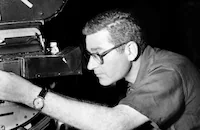
Mark Robson
Cast

Paul Newman
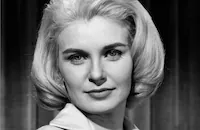
Joanne Woodward

Myrna Loy
Ina Balin

Leon Ames
Elizabeth Allan

Barbara Eden
George Grizzard

Patrick O'neal

Felix Aylmer
Raymond Greenleaf
Malcolm Atterbury
Raymond Bailey
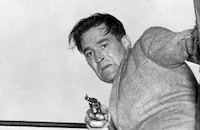
Ted De Corsia
Howard Caine

Kathryn Givney
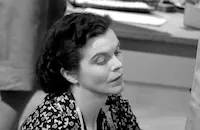
Dorothy Adams
Lauren Gilbert
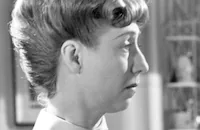
Blossom Rock
Cecil Elliott
Rory Harrity
Ottola Nesmith
Olive L. Halliday

Mae Marsh
Gordon B. Clarke

Ralph Dunn
Fellippa Rock
Jimmy Martin
William Quinn
Stuart Randall
John Harding
Sally Winn
Elektra Rozanska
Truman Smith

Elizabeth Russell
Otis Greene
Joe Bardot
Jack Daly
Barbara Perry
Cyril Delevanti
Kay Adell
David Mortashed
Coleman Francis
Owen Cunningham
Johnstone White
John Warburton
Douglas Evans
Jack Davis
Harry Cheshire
Henry Hunter
Alexander Campbell
Maurice Wells

Robert Shayne
Joe Forte
Mack Williams
Henry Edwards
Robert Nash
Rachel Stephens
Orrin Tucker
Crew
L. B. Abbott
Elmer Bernstein
Alfred Bruzlin
Leonard Doss
Paul S. Fox
James B. Gordon
Hal Herman
Sam Leavitt
Ernest Lehman
Harry M. Leonard
Ben Nye
Edward B. Powell
Maurice Ransford
Howard Richman
Mark Robson
Walter M. Scott
Dorothy Spencer
Leo Tover
Travilla
Helen Turpin
Lyle R. Wheeler

Videos
Movie Clip





Film Details
Technical Specs

Articles
From the Terrace
From his phenomenal first success with the novels Appointment in Samarra (1934) and BUtterfield 8 (1935) through just past the midpoint of the 20th century (although he continued to write for several years after), O'Hara was one of the best-selling authors in America. His writing was not always held in high esteem by critics (and apparently his difficult personality made him anathema to many who knew him personally), but readers ate his books up. He remains the most frequently published writer in the history of the New Yorker, with more than 200 stories appearing in that magazine's pages over the years. As Lorin Stein noted in the same publication in 2013, O'Hara may not have been the best writer of his time, but he was the most addictive.
Hollywood was likely most attracted to his sharply observed details; his honest look at class, sex, and alcoholism; and his facility with plain, tough dialogue. In addition to a small handful of relatively minor screenplays he wrote in the 1940s, popular films were adapted from his novels Ten North Frederick (1958) and Pal Joey (1957), which had also been a stage play in the early 1940s before being rendered toothless for the film version starring Frank Sinatra and Rita Hayworth.
Such was O'Hara's popularity and reputation for being a keen-eyed social historian that Twentieth Century-Fox studio, according to an October 1958 news item, bought the rights to his 1958 novel From the Terrace even before it was published. Another item in the Hollywood Reporter noted that Fox outbid four other studios for the film rights. The sprawling story covers far more than the movie could and some significant changes were made on the way to the screen that slackened the book's power, but as critic Howard Thompson noted in his New York Times review, screenwriter Ernest Lehman wisely tapped into the author's "matchless dialogue."
The film concerns itself with only about 15 years in the life of its main character, Alfred Eaton, focusing on his return from World War II (it was the first World War in the book), his loveless marriage to a selfish social climber, his rise on Wall Street, and the risk he faces in falling in love with a sympathetic girl from his home town.
This was the third movie real-life spouses Paul Newman and Joanne Woodward made together. A November 1959 Hollywood Reporter news item noted that Richard Egan was initially signed to co-star in the picture. Once Newman was cast, one might have expected Woodward to play the small-town girl who is the true love of his life, but she shines in the role of the scheming glamor-puss wife, displaying what one reviewer called "skillful, silken sensuality." Shortly before the picture's release, Woodward won the Best Actress Academy Award for her virtuoso role as a victim of multiple personality disorder in The Three Faces of Eve (1957), but it was supporting player Ina Balin, as the story's "good girl," who got the Academy's attention here, nominated for Best Supporting Actress in only her second theatrical feature film.
The picture was produced and directed by Mark Robson, who knew a thing or two about directing sprawling stories of sex, class, and scandal, having recently turned out Peyton Place (1957) and later directing Valley of the Dolls (1967), both from highly addictive best sellers themselves.
The picture was shot at Fox Movietone Studios in New York City, in Central Park and on Wall Street, various Long Island locations, the train station in Jersey City, the Pennsylvania town of Phoenixville, and various places in Los Angeles.
Not to be outdone by Fox, MGM nabbed the rights to an earlier O'Hara novel for their film of Butterfield 8 (1960), released just a few months after From the Terrace and earning Elizabeth Taylor her first Academy Award for her final picture under contract to the studio (and a role she hated).
Director: Mark Robson
Producer: Mark Robson
Screenplay: Ernest Lehman, based on the novel by John O'Hara
Cinematography: Leo Tover
Editing: Dorothy Spencer
Art Direction: Maurice Ransford, Howard Richmond, Lyle R. Wheeler
Original Music: Elmer Bernstein
Cast: Paul Newman (David Alfred Eaton), Joanne Woodward (Mary St. John), Myrna Loy (Martha Eaton), Leon Ames (Samuel Eaton), Ina Balin (Natalie Benzinger)
By Rob Nixon

From the Terrace
TCM Remembers Paul Newman (1925-2008) - Important Schedule Change for Paul Newman Tribute
Sunday, October 12
Sunday, October 12 Program for TCM
6:00 AM The Rack
8:00 AM Until They Sail
10:00 AM Torn Curtain
12:15 PM Exodus
3:45 PM Sweet Bird of Youth
6:00 PM Hud
8:00 PM Somebody Up There Likes Me
10:00 PM Cool Hand Luke
12:15 AM Cat on a Hot Tin Roof
2:15 AM Rachel, Rachel
4:00 AM The Outrage
TCM Remembers Paul Newman (1925-2008)
Paul Newman, with his electric blue eyes and gutsy willingness to play anti-heroes, established himself as one of the movies' great leading men before settling into his latter-day career of flinty character acting. Born in Shaker Heights, Ohio, in 1925, Newman studied at the Yale Drama School and New York's Actors Studio before making his Broadway debut in Picnic.
Newman's breakthrough in films came in Somebody Up There Likes Me (1956), in which he played boxer Rocky Graziano. He quickly reinforced his reputation in such vehicles as The Rack (1956) and Cat on a Hot Tin Roof (1958), for which he won the first of nine Oscar® nominations as an actor.
In 1958, while shooting The Long Hot Summer (1958) - which earned him the Best Actor award at the Cannes Film Festival - in Louisiana, he became re-acquainted with Joanne Woodward, who was the film's female lead. The two soon fell in love, and after divorcing Jackie, Newman and Woodward were married in Las Vegas in 1958. The couple appeared in numerous films together and had three daughters, which they raised far from Hollywood in the affluent neighborhood of Westport, CT.
The 1960s was a fruitful decade for Newman, who starred in such hits as Exodus (1960), Sweet Bird of Youth (1962) and Butch Cassidy and the Sundance Kid (1969); and scored Oscar® nominations for The Hustler (1961), Hud (1963) and Cool Hand Luke (1967).
Newman's political activism also came to the forefront during the sixties, through tireless campaigning for Eugene McCarthy's 1968 presidential campaign. His association with McCarthy led to his being named on future President Richard Nixon's infamous "Opponents List;" Newman, who ranked #19 out of 20, later commented that his inclusion was among the proudest achievements of his career.
Newman's superstar status - he was the top-ranking box office star in 1969 and 1970 - allowed him to experiment with film roles during the 1970s, which led to quirky choices like WUSA (1970), Sometimes a Great Notion (1971), Pocket Money (1972), and The Life and Times of Judge Roy Bean (1972) - all of which he also produced through First Artists, a company he established with fellow stars Sidney Poitier and Barbra Streisand.
After coming close to winning an Oscar® for Absence of Malice (1981), Newman finally won the award itself for The Color of Money (1986). He also received an honorary Oscar® in 1986 and the Jean Hersholt Humanitarian Award in 1994. A producer and director as well as an actor, Newman has directed his wife (and frequent costar) Joanne Woodward through some of her most effective screen performances [Rachel, Rachel (1968), The Effect of Gamma Rays on Man-in-the-Moon Marigolds (1972)].
He remained active as an actor in his later years, playing the Stage Manager in Our Town on both stage and television, lending his voice to the animated features Cars (2006) and Mater and the Ghostlight (2006). Off-screen, Newman set the standard for celebrity-driven charities with his Newman's Own brand of foods, which brought $200 million to causes, and the Hole in the Wall Gang camp for seriously ill children.
TCM Remembers Paul Newman (1925-2008) - Important Schedule Change for Paul Newman Tribute Sunday, October 12
Ernest Lehman (1915-2005)
Born on December 8, 1915 in New York City, Lehman graduated from New York's City College with a degree in English. After graduation he found work as a writer for many mediums: radio, theater, and popular magazines of the day like Collier's before landing his first story in Hollywood for the comedy, The Inside Story (1948). The success of that film didn't lead immediately to screenwriting some of Hollywood's biggest hits, but his persistancy to break into the silver screen paid off by the mid-'50s: the delicious Audrey Hepburn comedy Sabrina (1954, his first Oscar® nomination and first Golden Globe award); Paul Newman's first hit based on the life of Rocky Graziano Somebody Up There Likes Me; and his razor sharp expose of the publicity world based on his own experiences as an assistant for a theatre publicist The Sweet Smell of Success (1957).
Lehman's verasitily and gift for playful dialogue came to the fore for Alfred Hitchcock's memorable North by Northwes (1959, his second Oscar® nomination); and he showed a knack for moving potentially stiff Broadway fodder into swift cinematic fare with West Side Story (1961, a third Oscar® nomination); The Sound of Music (1965); Who's Afraid of Virginia Woolf? (1966); and Hello, Dolly! (1969, the last two being his final Oscar® nominations for screenwriting).
Lehman took his turn as a director when he adapted Philip Roth's comic novel Portnoy's Complaint (1972) for film, and despite some good reviews, it wasn't a commercial hit. He wrote just two more screenplays before retiring: an underrated comic mystery gem for Hitchcock Family Plot (1976); and the big budget Robert Shaw espionage drama Black Sunday (1977). Lehman served as president of the Writers Guild of America from 1983-85. After going zero for five with his Oscar® nominations, the Academy made it up to him in 2001, by presenting him with an honorary Academy Award for his "body of varied and enduring work." Lehman is survived by his wife Laurie and three children.
by Michael T. Toole
Ernest Lehman (1915-2005)
Quotes
If you're trying to annoy me, Mr. Eaton, you're succeeding.- Mary St. John
Would you like to go and cry or something?- Alfred Eaton
No, but I wouldn't mind if you faded into the sunset.- Mary St. John
Why didn't you bestow this honor on some other girl out there?- Mary St. John
Because I rather liked the view from the terrace. Then I saw you and I liked the view even more.- Alfred Eaton
You've touched me deeply.- Mary St. John
But not in the right places.- Alfred Eaton
Trivia
Notes
The film's title card reads: "John O'Hara's From the Terrace." According to an October 1958 Daily Variety news item, Twentieth Century-Fox bought the rights to O'Hara's novel prior to its publication. According to an undated, but contermporary Hollywood Reporter news item in the production file on the film in the AMPAS library, Fox outbid four other studios for the screen rights to the controversial bestseller. Unlike the film, the novel spans "Alfred's" life, beginning with his boyhood, just after World War I and continuing through his marriage to "Natalie," and his re-entry into the Navy, where he rises to the position of Secretary of the Navy.
A November 1959 Hollywood Reporter news item noted that Richard Egan was initially signed to co-star in the picture. A January 1960 New York Times news item stated that interiors were shot at the Fox Movietone Studios in New York City, and that location filming was done in Old Westbury, Jaggers Cove and Glen Cove, Long Island, New York. Studio publicity contained in the film's production file at the AMPAS Library added that the train station at Jersey City stood in for Philadelphia's Reading station, and Phoenixville, PA was used for the small town in which the Eaton family lives. West Adams Boulevard in Los Angeles was used as the location for the Eaton house. Other location shooting was done in Central Park and on Wall Street in New York City. From the Terrace marked the feature film debut for actress Elizabeth Allen (1929-2006).

Miscellaneous Notes
Released in United States Summer July 1960
Released in USA on video.
Scope
Released in United States Summer July 1960













